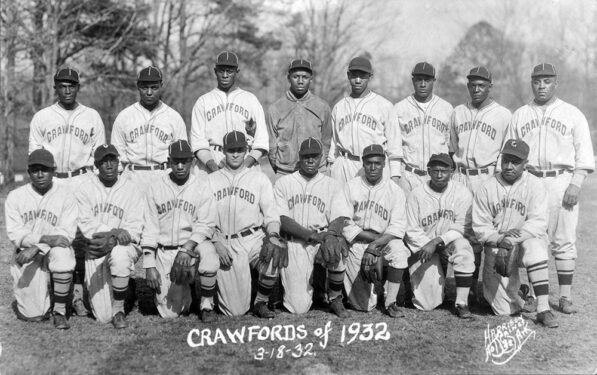
February is Black History Month, a time in the sports world where we celebrate the contributions of Black athletes who have overcome so much adversity just to play the game they love.
Of all the major sports, baseball’s breaking of the color barrier was the most mainstream, with Brooklyn Dodgers’ legend Jackie Robinson accomplishing the feat in 1947.
While Robinson was the iconic trailblazer, the many Negro Leagues players who came before him paved his way to stardom. Who were these players, and how would they have fared against Major League competition?
The answer to that question became a bit clearer late last year when Major League Baseball made the announcement that it would recognize the Negro Leagues as “Major Leagues,” meaning the statistics would be incorporated into the game’s record books.
“All of us who love baseball have long known that the Negro Leagues produced many of our game’s best players, innovations and triumphs against a backdrop of injustice,” MLB Commissioner Rob Manfred said in a statement. “We are now grateful to count the players of the Negro Leagues where they belong: as major leaguers within the official historical record.”
The decision validates the achievements of the roughly 3,400 Negro League baseball players who formed a loose collection of seven baseball leagues from around 1920 to the early 1950s, including the first Negro National League, the Eastern Colored League, the American Negro League, the East-West League, the Negro Southern League, the second Negro National League and the Negro American League.
At a time when racial segregation ruled the land, baseball fanatics missed out on seeing some incredible Black ballplayers on a daily basis, like Josh Gibson, Leroy “Satchel” Paige, Oscar Charleston, James “Cool Papa” Bell, Buck Leonard, John Donaldson and Martin Dihigo.
“In the minds of baseball fans worldwide, this serves as historical validation for those who had been shunned from the Major Leagues and had the foresight and courage to create their own league that helped change the game, and the country, too,” Bob Kendrick, President of the Negro Leagues Baseball Museum in Kansas City, said in statement.
It would have been very interesting to see how Gibson in particular performed at the Major League level. A powerful hitting catcher, Gibson – aka the “Black Babe Ruth” – is rumored to have hit between 800-900 home runs in his career – far more than current home run king Barry Bonds’ mark of 762. And mind you, Gibson died at the age of 35, so who knows how many more homers he would have hit?
He also batted a stellar .441 in 1943 for the Homestead Grays, contributing to his .365 lifetime batting average. Incorporated with historical MLB stats, that mark would be the second-best career batting average, behind only the great Ty Cobb.
Meanwhile, Paige was a five-time Negro League All-Star whose career spanned five decades. Imagine him pitching in the Majors during his prime. As it stands, Paige – one of 35 Hall of Famers from the Negro Leagues – did not make his MLB debut until the age of 42, and he still turned in a respectable 3.29 ERA and helped the Cleveland Indians to a World Series title in 1948 – the last in franchise history.
Most baseball fanatics can say they know a little bit about both Gibson and Paige, just based on their stature. Now though, the decision to recognize Negro Leagues statistics will help us celebrate even more notable Black baseball players.
Like John Henry “Pop” Lloyd, who has a tie to the borough of Brooklyn having played for the Brooklyn Royal Giants of the Eastern Colored League from 1918 through 1920. Lloyd was a shortstop who compiled a lifetime .343 batting average in the Negro Leagues.
Many consider Lloyd — a Hall of Famer —to be the greatest shortstop in Negro League history. He was referred to as the “Black Wagner” in comparison to Pittsburgh Pirates star shortstop Honus Wagner. In what can be considered among the highest praise a ballplayer can receive, Babe Ruth himself was said to believe that Lloyd was the greatest baseball player ever. Now that’s something special!
Another Brooklyn Royal Giant you may not have heard of is Charles “Chino” Smith, a 5-foot, 6-inch power hitting outfielder of the mid-1920s and ’30s. Just like Ruth complimented Lloyd, Smith received high praise from Paige, who called Smith one of the two most dangerous hitters in Negro League history, alongside Gibson.
Smith’s statistics speak for themselves. He batted an amazing .439 in 1927 and an even better .464 in 1929 while leading the league with 23 home runs and 24 doubles. During the prime of his career at age 30, he died after becoming ill with yellow fever while playing ball in Cuba.
As the statistics of Negro League players continue to be unearthed, we’re likely to hear more stories of what was a forgotten era in baseball history. Celebrating these remarkable achievements give these stories the recognition they deserve.
Current Black players in today’s game, like Mookie Betts, Aaron Judge, Dominic Smith and Andrew McCutchen, have these pioneers to thank for their opportunity to play Major League Baseball.
As Black History Month comes to a close, take a moment to absorb what players like Gibson, Paige, Charleston, Bell, Leonard, Donaldson, Dihigo and so many more meant not only to the Negro Leagues but also to the history of the game of baseball as we know it.
Contact Jim Mancari via email at jmmanc@gmail.com.
